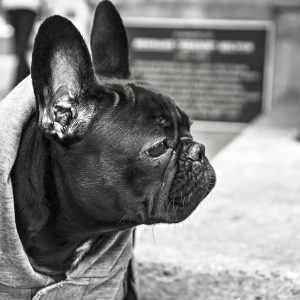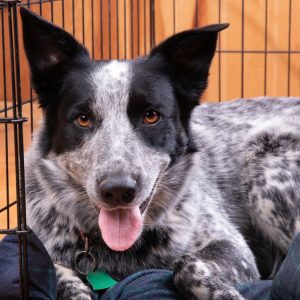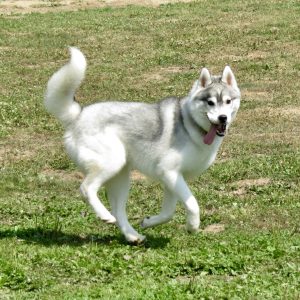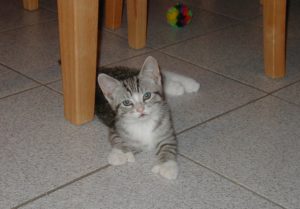Pugs are one of the most popular small breed dogs. Their wrinkled faces are capable of varied expressions that endear them to people. Unhappily, when it comes to health, they rank high on potential problems. That list of health concerns could lead to a low Pug lifespan.
Pug Lifespan
The Pug tends to live between 11-15 years. So what contributes to that lifespan?
These canines are robust – unusual among small dogs. With activity limited to short bursts, they aren’t prone to traumatic injuries. In fact, Pugs prefer to spend the majority of the day snoozing on your lap. (Napping never hurt anyone)
No, most of their health problems stem from genetics and the design of their skull:
- They’re a brachycephalic breed, leading to concerns with
- Breathing issues
- High temperatures
- Those bulging eyes predispose them to ocular problems
- They have a genetic risk for a couple of neurologic diseases
- Though sturdy, they can have orthopedic problems
- There’s a high risk for
- Diabetes mellites
- Hypothyroidism
- Mast cell tumors
- Portosystemic liver shunts
In short, if you’re considering bringing a Pug into your life, it’s a good idea to consider getting pet insurance. Also, establishing a rapport with your veterinarian isn’t a bad idea. Odds are, you’re going to become fast friends anyway. (Pugs make frequent trips to the vet)
Brachycephalic Breathing

The Pug has a brachycephalic skull. This gives them the distinctive “flat-faced” appearance that everyone loves so much. It also causes a lot of complications that contribute to a lower Pug lifespan. Pug’s don’t have a snout. This means their airway is extremely short – almost non-existent. Such a short pathway leads them to snort, wheeze, and make the various “Pug noises” that people adore. Unhappily, those noises are the result of air NOT moving through the system appropriately. This is also why Pugs snore. It’s cute, but it’s also a big concern.
Brachycephalic breeds and their inability to breathe are of particular concern in high temperatures. Their short faces mean they can’t pant properly to cool themselves. Pugs quickly succumb to heatstroke. You should NEVER leave them unattended outdoors when it’s warm. They should NEVER be outside for more than a few minutes. At the first whisper of a change in their breathing, they need to come inside.
As if all of this wasn’t bad enough, Pugs have another possible breathing problem. Some dogs have a congenital condition (something they’re born with) called collapsing trachea. They have a small or narrow trachea. When exercising, they cough or struggle to breathe.
Pug Eyes

As part of the skull design, Pug eyes bulge away from the skull. We love those big, sparkly eyes. However, the fact that the eyes are so prominent leads to a variety of ocular problems.
- Dry Eye: Dry eye occurs when the tear ducts don’t produce enough tears to keep the eye moist. If dryness persists, a black spot forms on the cornea (pigmentary keratitis). The pigment spreads across the eye, leading to blindness. Medication is life-long for both, but they’re available.
- Corneal Ulcer: Those eyes are out in the open, so injury is easy. Signs of concern include squinting, excessive tears, and redness. Ulcers are treated with medication and an E-Collar to prevent further trauma. If left untreated, blindness can occur, or the eye can rupture (really gross!).
- Proptosis: Pug eyes already sit on the edge of the eye socket. Any pressure (pulling on a collar, trauma, rough play, etc.) can easily dislodge the eye. When this happens, get to the vet right away! (Just in case you didn’t have that in mind)
- Progressive Retinal Atrophy: PRA is the gradual degeneration of the blood vessels supplying the retina. You’ll initially notice your Pug having trouble seeing at night (night blindness). This progresses to complete blindness. Unhappily, there is no treatment.
Scary, right? If you choose to buy your Pug, there’s hope. Reputable breeders obtain a certificate from the Canine Eye Registration Foundation (CERF). This certificate tells you that your Pug’s eyes are normal. Fewer eye complications can lead to a longer Pug lifespan.
“On My Nerves”
Pugs are prone to a couple of genetic conditions affecting the nervous system. Unfortunately, there are no cures. The Pug Dog Club of America and the American Kennel Club sponsor ongoing research projects to understand them better. With luck, there may be a cure down the road. For now, these neurologic conditions have the potential to shorten your Pug’s lifespan.
- Pug Dog Encephalitis: PDE is an inflammatory process in the brain unique to Pugs. PDE affects young dogs, causing seizures, circling, blindness, and, eventually, coma and death. The progression is fairly rapid (days to weeks). There’s no test available.
- Degenerative Myelopathy: Like amyotrophic lateral sclerosis (ALS), or Lou Gehrig’s disease, degenerative myelopathy causes weakness in the hind legs. Other canines are susceptible, but Pugs have a higher incidence. The hind legs grow progressively weaker, eventually becoming paralyzed. There are suggestions for comfort (physical therapy, supplements, acupuncture). There IS a genetic test available.
Pug Bones
Pugs aren’t as delicate as other small breed dogs. Many believe they’re descended from mastiffs. However, they still have some orthopedic concerns.
- Hemi-Vertebrae: Brachycephalic breeds tend to have misshapen vertebrae. No one is sure why. Sometimes, only a few vertebrae are affected. Those Pugs have a normal lifespan. Others become uncoordinated when just a few months old. This progresses as they age, and they end up paralyzed. Surgery can help.
- Hip/Elbow Dysplasia: Hip/Elbow dysplasia occurs when the hip/elbow joint is deformed. This isn’t unique to Pugs – plenty of dogs (large and small) develop this problem. Surgical correction is available.
- Legg-Perthes Disease: Many small breed dogs are prone to LPD. The blood supply to the femur decreases and the joint connecting the femur to the pelvis disintegrates. Puppies start limping by 4-6 months, and the leg shows signs of wasting (atrophy). A special surgical procedure is performed, and a normal Pug lifespan follows.
Similar to the CERF for eyes, a reputable breeder obtains a special certification for hip and elbow dysplasia. This comes from the Orthopedic Foundation for Animals, and you can check for these certificates on their web site.
The Pug Life
Despite having a higher than average list of health concerns, Pugs still have the same lifespan as other dogs their size. If you’re considering bringing one of these clowns into your life, do your homework. Find out all you can about their health concerns. Research pet insurance. Have a long conversation with your vet. And prepare for a whole lot of love for the years to come.













No comment yet, add your voice below!